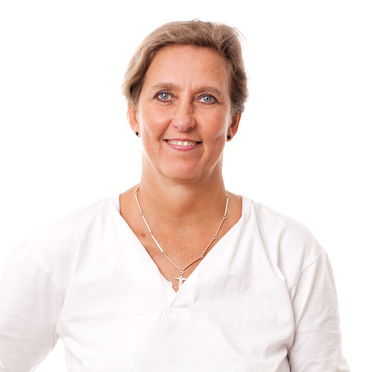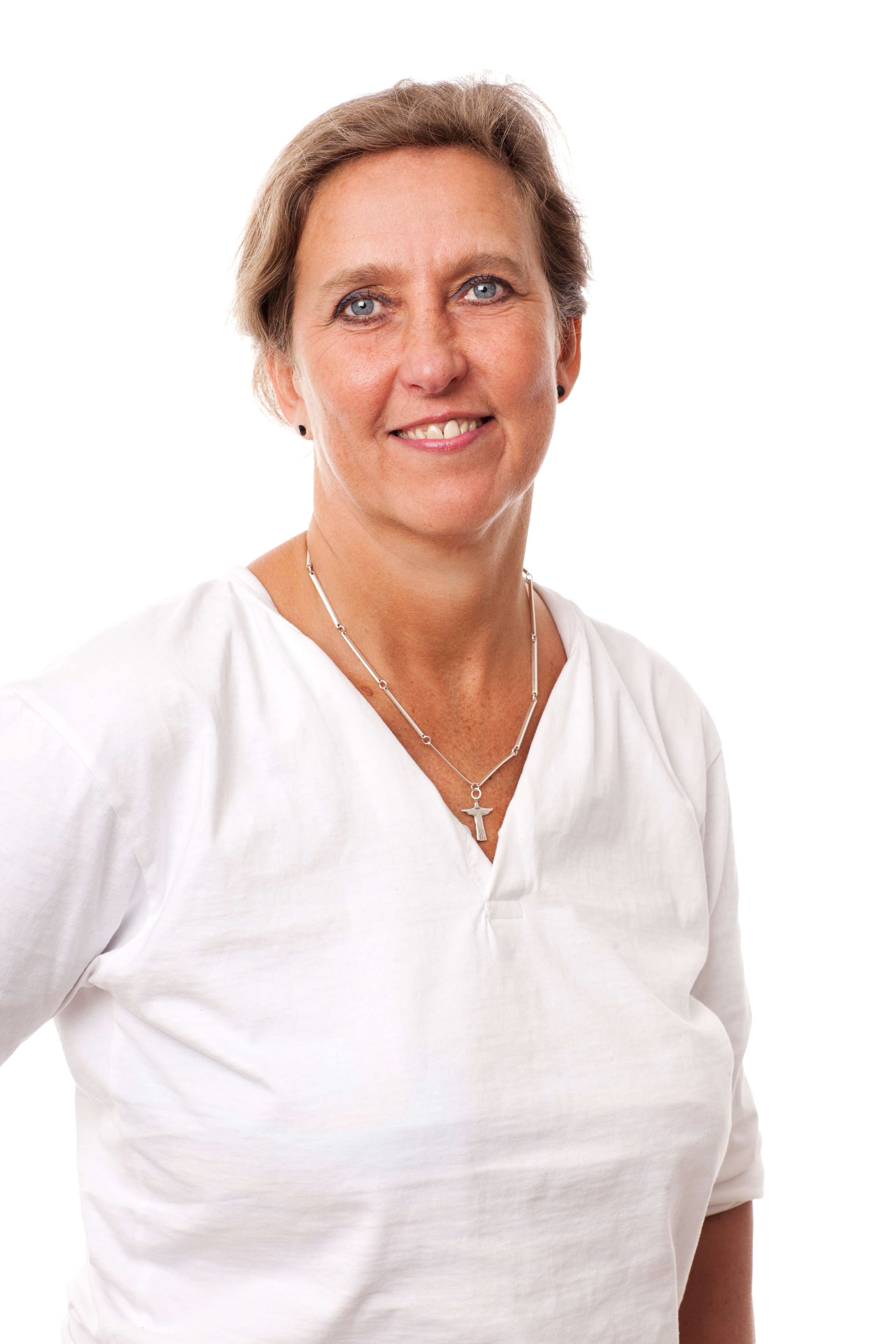
Eva Andersson
Senior lecturer
Email: eva.andersson@gih.se
Phone: +46 8-120 53 791
Visiting address: Lidingövägen 1
Room: 1215
Belongs to: Department of Physical Activity and Health, Section for Health Science
Interests
Read more about my interests in teaching, research and collaboration.
The main interests and teaching areas I have are to try to contribute to the students obtaining basic and in-depth knowledge of preventive and promotive measures, identification, treatment and preventive measures for various common diseases, addiction and acute injuries/diseases. This includes FYSS (physical activity as disease prevention and treatment) and FaR (physical activity on prescription). Teaching topics that are addressed are diabetes, cardiovascular diseases, mental illness, ANT (alcohol, drugs and tobacco) as well as abuse of anabolic steroids, violence in close relationships, eating disorders, obesity, exercise during pregnancy, allergy/asthma, osteoporosis and emergency care.
Additional teaching elements I contribute to, together with other teachers/supervisors, is that the students gain experience of being able to create, carry out and reflect on project work with a focus on health promotion processes in school, workplace, leisure, health care.
Several of the students who have previously carried out health projects and graduated from GIH are today operational managers in various municipalities and schools and collaborate in the organization on GIH's clinical education (mentioned health projects and in the teacher students' teaching of health in different ways for upper secondary school students). The students' varying knowledge of health has thus contributed to further health development in society in different employments they have received.
As the students have acquired knowledge in both promotive and primary and secondary preventive health work, and also gained knowledge of management of various acute injuries/illnesses as well as customary routines in healthcare for various common diseases, they can both organize and lead activities with physical activity. In this way, they can, with all their acquired knowledge in health, sports and pedagogy at GIH, contribute to increased physical activity habits and increased physical capacity, as well as perform evaluations with various physiological tests and health questionnaires, compile data and present data in writing and orally for volunteer participants without and with various common diseases. Thus, GIH graduates can work both in health and medical care in a variety of ways and contribute to increased health for different individuals as well as for society at large.
I am especially interested in strength, stability and training of the back, abdominal and hip muscles. Optimal strength and coordination of the trunk and hip muscles is of great importance in various sports, health and rehabilitation contexts. Different hypotheses exist about which trunk muscles are activated, and how much, in different test and training exercises, in everyday situations and during maximum strength tests. Muscle activity data can provide objective answers here.
In the thesis work and in subsequent studies, we have presented results on which and how much deep and superficial lumbar, abdominal and hip muscles are activated in different everyday situations in standing, sitting, lying down, walking and running, as well as during various training exercises, including maximal effort. Recording of muscle activity has been performed from the skin surface with skin electrodes and in deeper trunk and hip muscles with wire electrodes implanted in local anesthesia with thin needles under the guidance of ultrasound.
Evaluations of health projects with physical activity (for people without and with common diseases) may include voluntary physical tests such as fitness and endurance strength in the back, abdominal and hip muscles. In these contexts, it can be valuable to have information about the degree of activation in the muscles during varying test and training exercises as well as in everyday situations and maximum tests.
Previously, there had not been any significant systematic compilation of results on how differently deep and superficial lumbar muscles are activated in different situations, in varying everyday body positions and in training exercises. We have also studied how abdominal and hip flexor muscles vary in degree of activation during both standardized static exercises at different angles and during movement at constant speed.
Maximum strength in the back, abdominal and hip muscles in different categories of elite athletes and individuals with low back pain has also been investigated. Strength profiles of elite athletes and those with low back pain can provide information about which muscle groups may need to be strengthened. Research has shown that good muscle strength is associated with a reduced incidence of certain common diseases/ill health.
Other studies that I am involved in concern:
- Insulin resistance and various muscle functions including in muscle mitochondria (energy factories) associated with fasting and physical activity.
- Changes in the electrical activity of the heart (recorded by standard ECG and so-called vector ECG) in younger and older adults associated with maximal exertion.
- Physiological tests of, for example, fitness/endurance and strength.
- Physical activity habits in, for example, people with obesity and the elderly.
It is hoped that the results can contribute to an increased understanding and interest in physical capacity as well as the degree of involvement of different trunk and hip muscles during test and training exercises, as well as in other situations in varying sports and health contexts.
Together with my colleagues, we collaborate with various municipalities (Solna, Täby, Lidingö), psychiatric clinics, health centers, companies and organizations in Greater Stockholm to run health projects with leader-led physical activity a couple of times a week for 2-3 months together with students and teachers/supervisors at GIH. The students provide leader-led physical activity a couple of times a week, and initially and at the end of the period, physiological tests (fitness, strength, mobility and balance) are performed and a health survey is carried out about perceived health and different lifestyle habits such as physical activity, diet, smoking, alcohol and sleep.
The participants, without and with various common diseases, including people with anxiety disorders and depression, are recruited through various partners or directly to GIH. Typically, 2–4 students lead a group of 25–75 people. Examples of physical activities offered are strength training, exercise and water gymnastics and Nordic walking.
For example, 2–400 elderly people in Solna participate annually in the health projects, where a former GIH student is now head of operations and has employed additional GIH graduates in the project activities. Similar employment situations are seen in Täby, however, the number of older project participants there is not as many yet.
Several graduated GIH students have been employed in municipalities, county councils and at Karolinska Institutet in areas such as the alcohol line, smoking cessation, overweight/obesity among children and adults, and FaR/FYSS. Several of these students return annually to GIH and contribute with expert knowledge in public health education and can thus shed light on essential theoretical and practical knowledge in the education. Some former GIH students have also defended their theses and can highlight relevant research findings in the field of health at lectures at GIH.
Collaboration also takes place with the surrounding community by inviting other experts in various health fields as guest lecturers. In this way, contacts and expert knowledge have been obtained by the students within the framework of teaching, which has made it easier for some to find employment after graduation and then be able to contribute to increased health at the individual, group and societal level.
Latest publications
- Conference Paper
Effects Training With Osteostrong Compared To Physical Training In Individuals At High Fracture Risk
2023- P. Lindberg,
- A. C. Grahn Kronhed,
- C. Kaijser Alin,
- Article
Stress and recurrent abdominal pain.
2023- Gösta Alfvén,
- Eva Andersson
- Article
Physical exercise augmented cognitive behaviour therapy for older adults with generalised anxiety disorder (PEXACOG)
2023- Kristine Sirevåg,
- S H Stavestrand,
- T Sjøbø,
Showing 1 - 3 of 105
Other information
High-resolution images
To download the image, click on the image so that it becomes visible in a new window. Right-click and select Save Image As. The high-resolution image will then be downloaded. Please quote the name of the photographer.

Photo: Linus Hallgren

Photo: Linus Hallgren
Information
Academic title
Bachelor of Education in Physical Education and Licensed Physician

